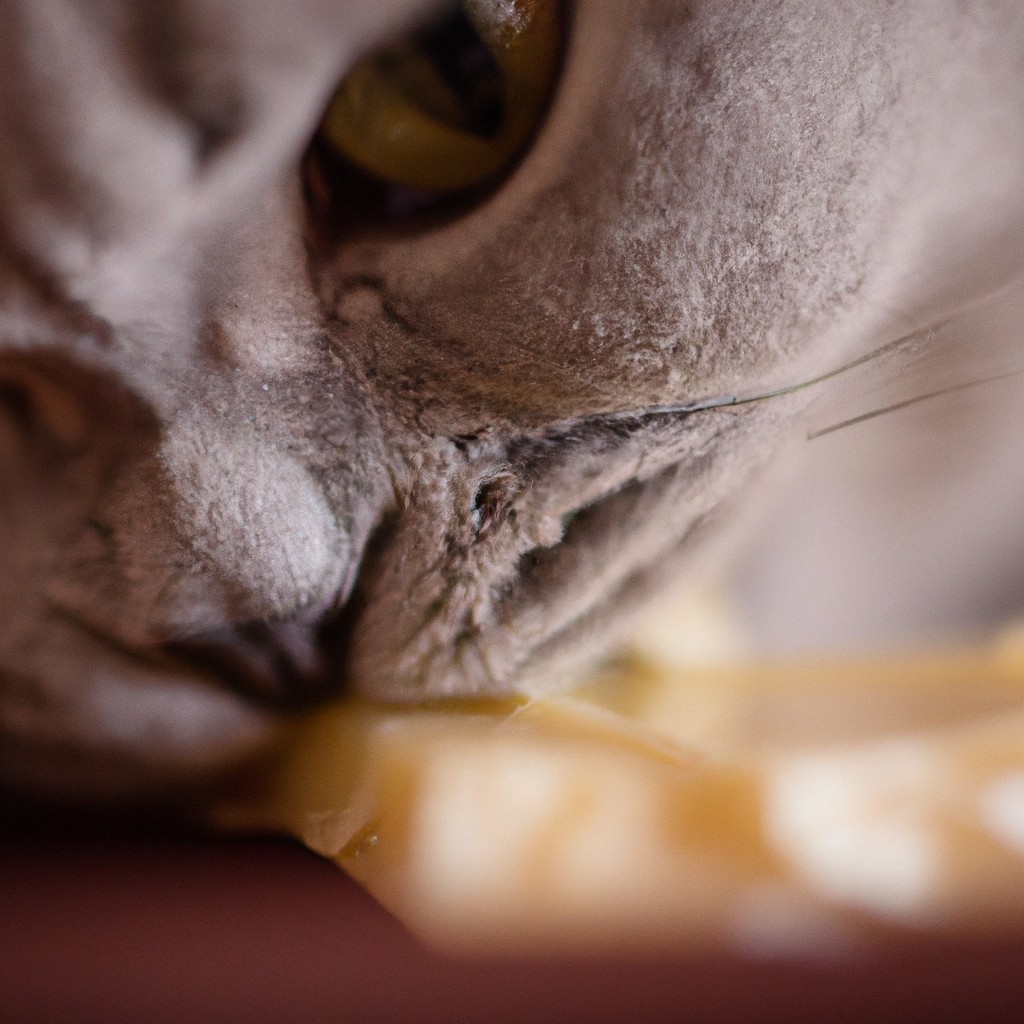No, cats cannot eat chocolate as it contains theobromine, which is toxic to them.
Cats and chocolate may both bring joy to many households, but it’s crucial to understand that these two should never mix.
Cats cannot eat chocolate as it contains theobromine, a substance that is toxic to them.
Even a small amount can lead to serious health issues such as rapid breathing, seizures, and even heart failure.
This article will delve into why chocolate is dangerous for cats, the signs of chocolate poisoning, and what to do if your feline friend accidentally ingests it.
Remember, knowledge is power when it comes to keeping your pet safe.
Key takeaways:
- Cats cannot eat chocolate as it is toxic to them.
- Even a small amount of chocolate can cause serious health issues in cats.
- Dark chocolate and unsweetened baking chocolate are the most dangerous for cats.
- Symptoms of chocolate poisoning in cats include restlessness, rapid breathing, tremors, and seizures.
- If your cat ingests chocolate, call a veterinarian immediately.
Inside
Is Chocolate Bad for Cats?

Chocolate contains both caffeine and theobromine, two substances that cats’ bodies can’t efficiently process.
These compounds negatively affect their cardiovascular system as well as their central nervous system.
Ingesting chocolate can cause cats to show signs of restlessness, increased heart rate, tremors, and in severe cases, seizures.
Dark chocolate and unsweetened baking chocolate contain higher levels of these harmful substances, making them especially dangerous.
However, all chocolate types – even milk or white chocolate – should be avoided to ensure your cat’s health and safety.
Can Cats Die From Chocolate?
Yes, ingestion of chocolate can potentially be fatal in cats. This danger arises due to a chemical compound called theobromine, naturally found in cocoa beans. Cats lack a liver enzyme to metabolize theobromine, leading to harmful build-up in their system.
Several factors determine the level of toxicity:
- The type of chocolate: Darker chocolate or pure cocoa contain more theobromine.
- The weight of the cat: Smaller cats are more vulnerable to theobromine poisoning.
- The amount consumed: The larger the amount ingested, the greater the risk.
Signs of possible theobromine poisoning include:
- Restlessness
- Rapid breathing
- Muscle tremors
- Seizures
In case of ingestion, immediate actions required are:
- Call the vet immediately.
- If instructed, induce vomiting at home using methods suggested by the vet.
- Provide information about the type and quantity of chocolate consumed to help in the treatment plan.
Can Cats Eat Chocolate Ice Cream?
Chocolate ice cream, despite its tempting taste, is not suitable for feline consumption due to two primary ingredients—chocolate and lactose.
Chocolate contains theobromine, a substance dangerous to cats. While humans can easily metabolize theobromine, cats process it much more slowly, allowing it to build up toxic levels in their system.
Furthermore, most cats are lactose intolerant. This means that they lack the enzyme necessary to break down lactose, a sugar present in ice cream. Ingesting lactose can cause digestive issues such as vomiting and diarrhoea.
Additionally, the high sugar content of ice cream is not beneficial for cats. A feline’s natural diet doesn’t include large amounts of sugar, and overconsumption can lead to obesity and diabetes.
So, even if your fluffy friend appears to be fond of chocolate ice cream, it’s crucial to resist the urge to share your treat with them. For their safety, it’s best to stick to diets and pet treats specifically designed for felines.
Can Cats Drink Chocolate Milk?
Chocolate milk contains two harmful ingredients for felines: chocolate and lactose. Chocolate possesses theobromine, a compound potentially lethal for cats in high amounts. It affects their nervous system and heart, leading to serious health issues. As for lactose, adult cats can’t digest it efficiently, causing gastrointestinal disturbances like diarrhea or vomiting.
If a cat has lapped some chocolate milk accidentally:
- Monitor for any signs of distress like quick breathing, tremors, or unusual behavior.
- Contact a veterinarian immediately providing them the details like quantity ingested, and the size and weight of the cat.
- Do not induce vomiting unless instructed by the vet.
- Ensure future measures to keep chocolate milk and all chocolate products out of a cat’s reach.
Remember, the assumption ‘what’s safe for humans is safe for pets’ doesn’t always hold true, especially with chocolate-related products. Prevention is often the best practice in such cases.
Can Cats Eat Chocolate Pudding?
Though chocolate pudding may look appetizing and harmless, it is not suitable for feline consumption. The primary danger is the presence of a toxic compound, theobromine, found in cocoa-based products. Human-grade chocolate is rich in theobromine which cats cannot metabolize effectively, leading to potential toxicity.
In addition, chocolate pudding often contains high levels of sugar and dairy. While small amounts of dairy may not severely harm a cat, excessive quantities can cause digestive upset as most cats are lactose intolerant. High sugar content impacts feline health negatively over time, contributing to conditions such as diabetes and obesity.
Lastly, artificial sweeteners, such as xylitol, often used in ‘sugar-free’ desserts are extremely toxic to cats, even in small amounts. It’s essential to keep any food product containing xylitol well out of reach of your cat.
If you suspect that your cat has managed to consume chocolate pudding or any other food containing chocolate, closely monitor for signs of chocolate toxicity. These can include restlessness, rapid breathing, muscle tremors, seizures, increased heart rate, or vomiting. If you observe any of these signs, immediate veterinary help should be sought.
Signs of Chocolate Poisoning in Cats
If a cat has ingested chocolate, certain symptoms may appear as the toxins in chocolate affect the cat’s body.
It is important to observe your cat’s behavior for any abnormality such as hyperactivity, restlessness, or excessive panting, which could indicate an increased heart rate.
A more alarming symptom is vomiting or diarrhea, potentially containing traces of chocolate. These symptoms may indicate that the cat’s body is attempting to expel the ingested chocolate.
Elevated body temperature is another sign, caused by the stimulant effect of theobromine and caffeine present in chocolate.
Cats may appear whiskers-twitch twitchy, due to neurological manifestation of theobromine toxicity.
Rapid breathing or difficulty breathing can also occur if the cat has consumed a large amount of chocolate.
Should such symptoms appear, immediate veterinary assistance is crucial for the cat’s health and wellbeing.
The severity of symptoms often corresponds to the amount and type of chocolate consumed. Dark chocolate or baking chocolate, which contains a higher concentration of theobromine, can cause more severe symptoms than similar amounts of milk chocolate.
What If My Cat Ate Chocolate?
If you suspect your feline friend has swallowed chocolate, immediate action is essential. Keep calm to ensure your pet stays relaxed. Identify the type of chocolate consumed; dark chocolate and baking chocolate are more toxic than milk chocolate. Try to estimate the amount of chocolate ingested. Even small amounts can lead to health problems for your cat.
Survey for signs of chocolate toxicity, including restlessness, increased urination, tremors, irregular heart rhythm, and, in severe cases, seizures. If any of these signs are evident or if you’re uncertain about the amount of chocolate your cat has eaten, contact your vet straightaway.
Whilst waiting for professional help, keep your pet comfortable and monitor their behaviour. Avoid inducing vomiting unless instructed by a professional. This could cause more harm than good, especially if done incorrectly.
Remember, the rapidity of your actions could be pivotal for your cat’s recovery. Ensure to have your veterinary clinic’s contact details on hand for these types of emergencies.
Is It Bad If My Cat Licked Chocolate?
Even a small amount of chocolate can have adverse effects on a feline’s system, and this includes mere licking. The crucial component, theobromine, is toxic and can lead to a number of health issues, especially if consumed in larger quantities. While a one-time, small lick might not cause significant harm, consistent exposure can accumulate toxin levels and pose a serious threat.
If a cat has licked chocolate, monitor for signs of poisoning including restlessness, increased heart rate, tremors, vomiting, and diarrhea.
Immediate action should be taken at the first sign of distress. This can include contacting a veterinarian, removing any other chocolate sources from the cat’s environment, and ensuring that they have plenty of fresh water available to help flush the theobromine from their system.
Remember, it’s safer to keep all forms of chocolate out of your pet’s reach to mitigate risks.
How Vets Treat Chocolate Toxicity in Cats
Treatment begins with preventing further absorption of the toxic material. If ingestion was recent, the veterinarian may induce vomiting. Activated charcoal can also be administered as it binds theobromine, the toxic compound in chocolate, thus limiting its absorption into the bloodstream.
Cats that have progressed to showing symptoms such as rapid breathing, restlessness or increased heart rate, need immediate medical attention. The severity of symptoms define the treatment approach. In mild cases, it may involve rehydrating the cat and remedying the diarrhea and vomiting. More severe cases may require anti-seizure medication, cardiac medication, or oxygen therapy.
In the event your cat has ingested chocolate, it is important to identify the type and amount of chocolate, and then contact a veterinarian. Verify the chocolate’s cocoa content if possible as it’s the concentration of theobromine which proves toxic. Certain types of chocolate, like dark chocolate and unsweetened baking chocolate, have higher levels of theobromine and are therefore more dangerous to your cat.
Lastly, while in recovery, it is paramount to ensure a calm and safe environment for your cat to recuperate adequately. Avoid stress triggers and refrain from feeding them their regular diet until instructed by the veterinarian.
How Much Chocolate Is Toxic to Cats?
The amount of chocolate that can be toxic to cats varies depending on the type of chocolate and the weight of the cat. Dark chocolate and baking chocolate have higher levels of theobromine, a substance highly toxic to cats – even a small amount can prove fatal. White chocolate, on the other hand, contains very little theobromine, but can still pose health risks due to sugar and fat content.
The weight of the cat also plays a significant role in chocolate toxicity. A piece of chocolate that may cause no harm to a large cat could be dangerously toxic to a smaller one.
Essentially, there is no safe amount of chocolate for cats. The safest option is to keep chocolate out of your cat’s reach at all times.
Steps to Take If Your Cat Has Ingested Chocolate
First and foremost, don’t panic. Swift and calm action is the best course.
Next, determine the type and amount of chocolate consumed. Different chocolates have varying levels of theobromine, the compound toxic to cats. Darker chocolates generally have a higher concentration.
If possible, safely collect any remaining chocolate that’s not been eaten. This could be crucial information for your vet.
Contact your vet or a pet poison helpline immediately. Provide them with as many details as possible – type of chocolate, amount consumed and anything else you observed.
Do not try to induce vomiting unless specifically instructed to by a professional. Incorrectly doing so can lead to other health complications.
Finally, bundle your feline into the car and take it to the vet. Quick treatment minimizes the risk of long-term damage. Your vet may induce vomiting, administer activated charcoal to absorb the theobromine, or provide intravenous fluids. Depending on your cat’s condition, they might need to hold it for further monitoring.
Remember, even if your cat appears perfectly fine after consuming chocolate, don’t skip the vet visit. Symptoms might take several hours to show, during which time the theobromine has already begun damaging the heart, central nervous system and kidneys.
And for future prevention, keep chocolates out of feline reach. Even if your cat has never shown interest before, it’s better safe than sorry.
How Long After a Cat Eats Chocolate Will Symptoms Show?
Ingested chocolate can show its toxic effects on cats within a few hours. The onset and severity of symptoms largely depend on the chocolate’s type and the amount consumed relative to the cat’s body weight.
A small quantity might cause gastrointestinal issues such as vomiting or diarrhea. If a larger quantity was ingested, more severe symptoms like increased heart rate, irregular heartbeat, high body temperature, muscle tremors, and seizures might be evident.
In case of any suspicion, it would be wise to:
- Monitor your cat closely for any abnormal behavior or bodily reactions.
- Gather as much information as possible about the type and amount of chocolate consumed.
- Contact your vet promptly with the gathered information; immediate medical attention may save your cat’s life.
FAQ
How much chocolate is toxic to cats?
A toxic amount of chocolate for cats is 0.5 ounces of semisweet or dark chocolate and just over 1.1 ounces of milk chocolate.
Will a tiny bit of chocolate hurt my cat?
Even a tiny bit of chocolate can potentially harm your cat.
What type of chocolate can cats eat?
Cats should not consume any type of chocolate as it contains harmful substances like caffeine and theobromine.
Will cats willingly eat chocolate?
Cats, generally, do not show interest in consuming chocolate and it should not be offered to them due to potential health risks.
What are the symptoms of chocolate poisoning in cats?
Chocolate poisoning in cats can result in symptoms like restlessness, rapid breathing, muscle tremors, abnormal heart rhythm, or seizures.
Can cats have any health benefits from consuming chocolate?
No, chocolate is harmful to cats and can cause severe health issues.
What should I do if my cat accidentally consumed chocolate?
Immediately contact a veterinarian if your cat accidentally consumes chocolate, as it contains theobromine, which is toxic to cats.




